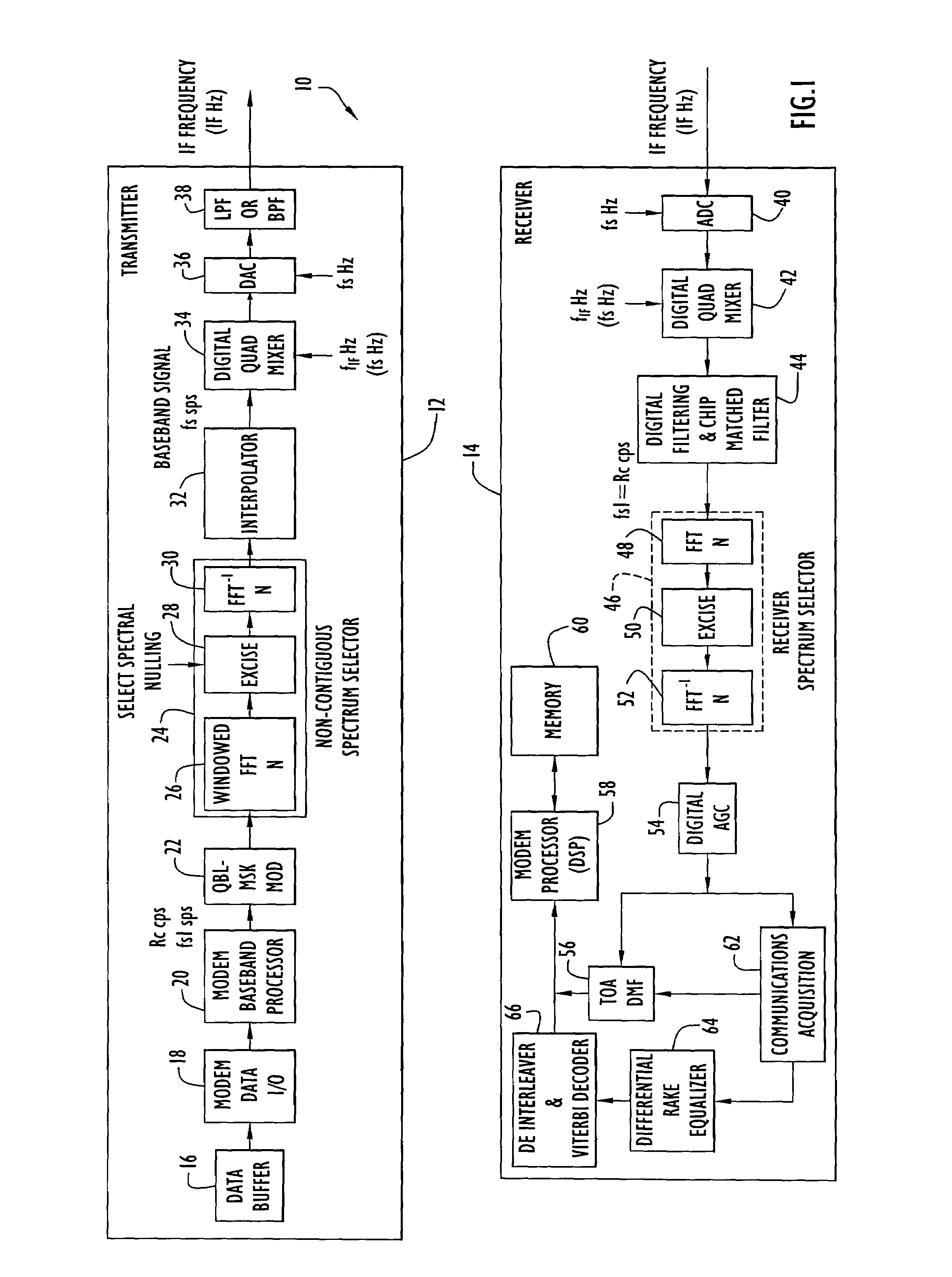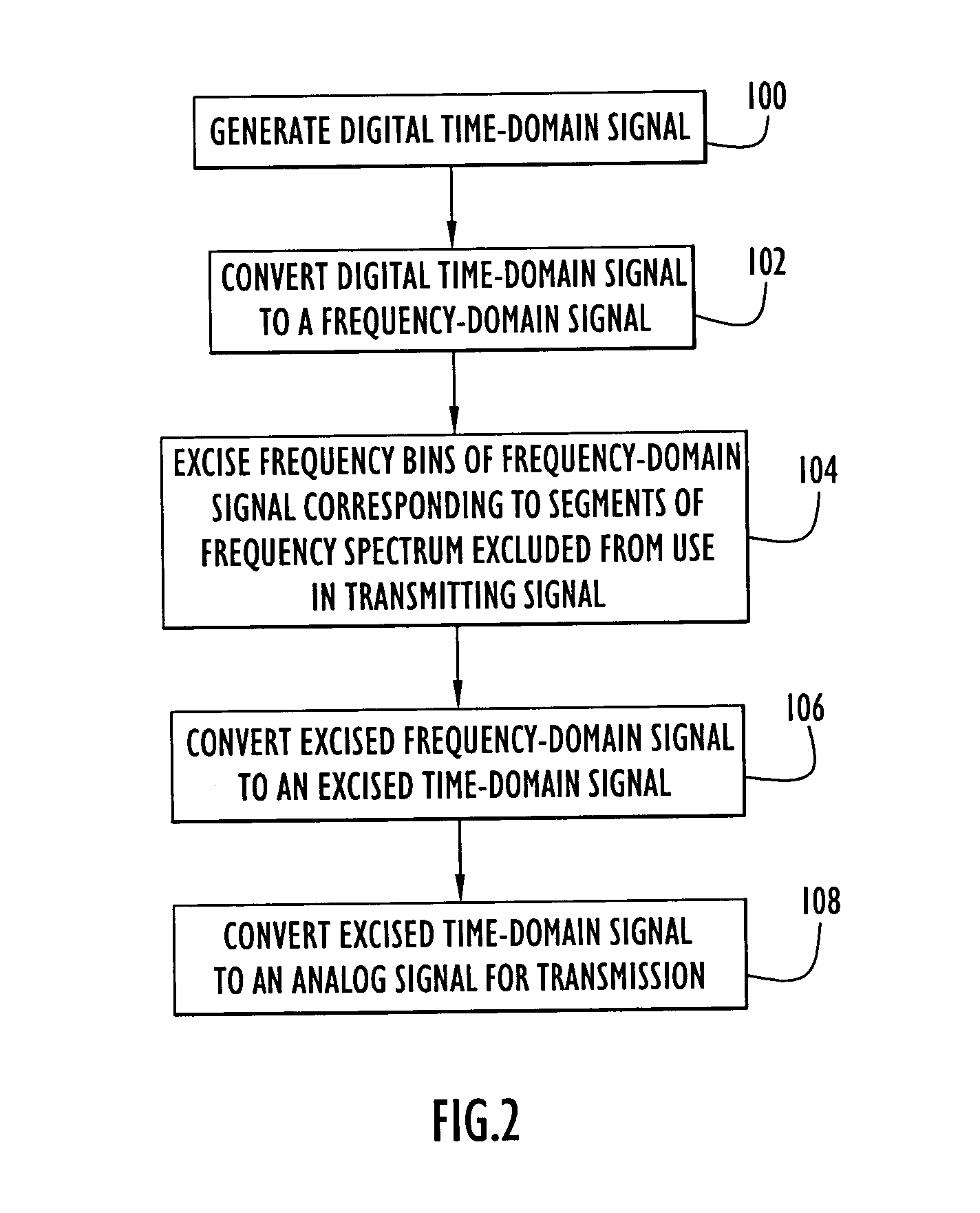Methods and apparatus for transmitting non-contiguous spread spectrum signals for communications and navigation
a technology of spread spectrum and transmission method, applied in the direction of digital transmission, transmission, instruments, etc., can solve the problem of not always being able to obtain a frequency allocation with enough bandwidth, and achieve the effect of eliminating interference received and not reducing signal energy
- Summary
- Abstract
- Description
- Claims
- Application Information
AI Technical Summary
Benefits of technology
Problems solved by technology
Method used
Image
Examples
Embodiment Construction
[0019]The following detailed explanations of FIGS. 1 and 2 and of the preferred embodiments reveal the methods and apparatus of the present invention. The described system overcomes the aforementioned difficulties caused by the unavailability of sufficient contiguous frequency spectrum by making it feasible to use non-contiguous frequency bands for spread spectrum data communication systems and navigation systems, such as those that employ time-of-arrival (TOA) ranging for position determination. As a result, it is easier to obtain frequency allocations for improved ranging accuracy and higher data rate communications because increased bandwidth need not be contiguous. In addition, the performance achievable using contiguous bandwidth in present state-of-the-art TOA ranging and communications systems can be achieved using non-contiguous pieces of the spectrum. As used herein, the term “non-contiguous frequency bands” refers to two or more frequency bands that are separated in the fr...
PUM
 Login to View More
Login to View More Abstract
Description
Claims
Application Information
 Login to View More
Login to View More - R&D
- Intellectual Property
- Life Sciences
- Materials
- Tech Scout
- Unparalleled Data Quality
- Higher Quality Content
- 60% Fewer Hallucinations
Browse by: Latest US Patents, China's latest patents, Technical Efficacy Thesaurus, Application Domain, Technology Topic, Popular Technical Reports.
© 2025 PatSnap. All rights reserved.Legal|Privacy policy|Modern Slavery Act Transparency Statement|Sitemap|About US| Contact US: help@patsnap.com



